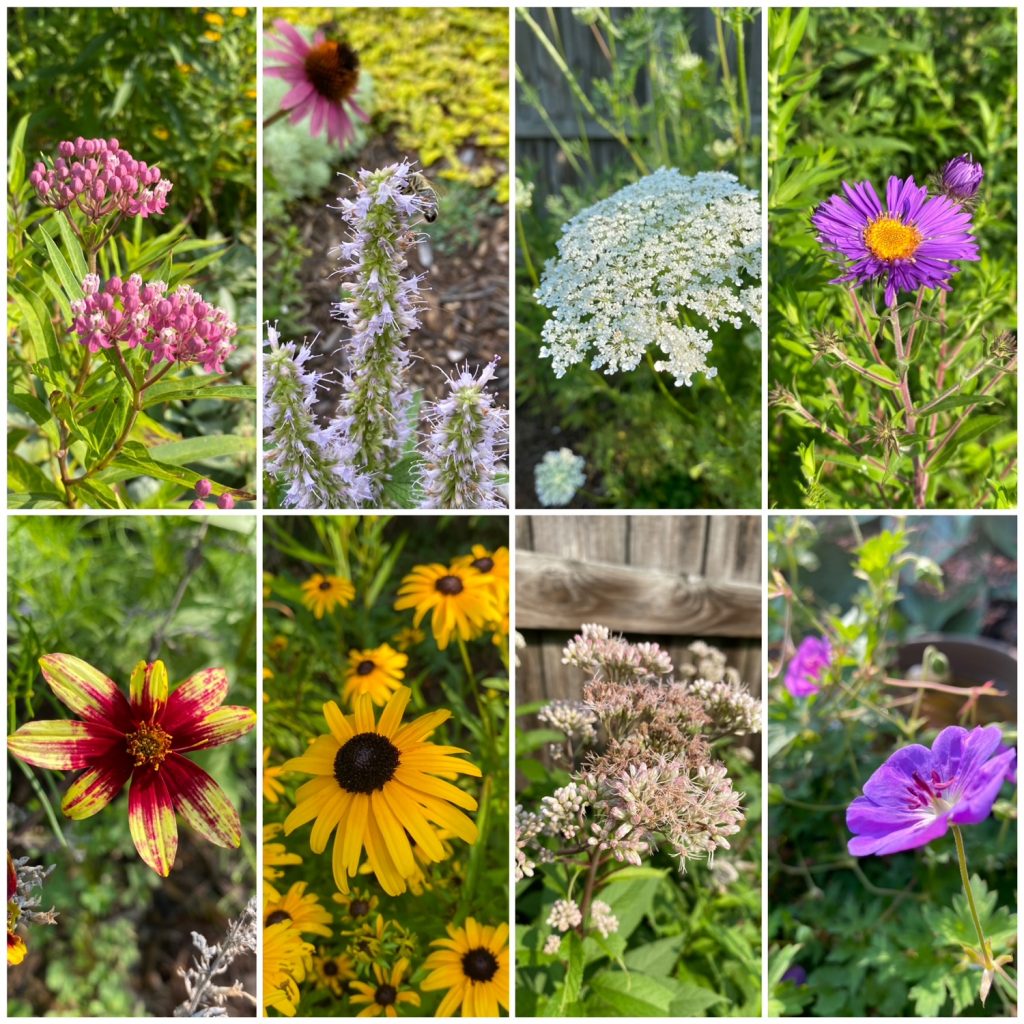
Happy August, everyone! August is usually our hottest month here in Central Ohio, but it’s hard to imagine it getting much warmer and humid than it was in July. We finally had some rain the other day, and the thunderstorms cooled things off a bit. I sprang into action to weed, tie up veggies, and deadhead a few of the annuals. I know these nicer temps won’t last long.
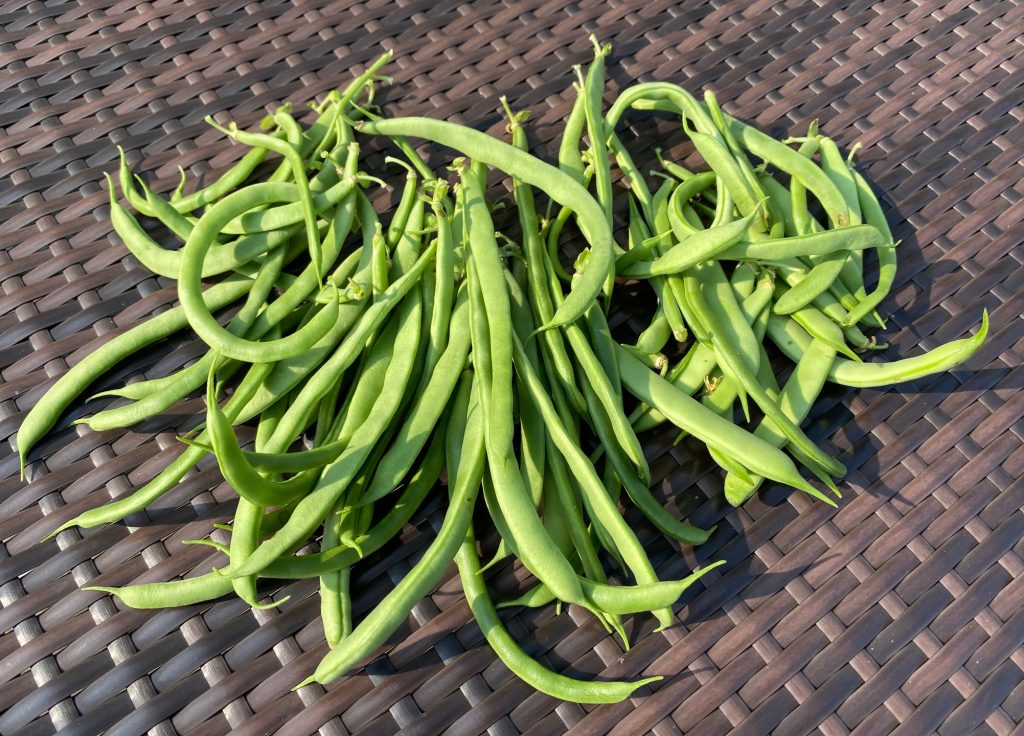
We had some exciting news last week in the garden. A friend who also helps to raise monarch butterflies had a bumper crop this year, and needed some assistance. She gave us ten little eggs, which have now all hatched. They start life as the most wee little creatures, but seem to double in size just about every day.
Monarchs life cycles kind of happen like clockwork. The heat and humidity will slightly impact the speed at which they grow, but for the most part, it’s pretty easy to track how long each will take to move from an egg, to a butterfly. Once the eggs hatch, the monarch caterpillars start munching on milkweed leaves. Milkweed contains a toxin that is poisonous for most animals (and humans) to eat, but monarchs contain a special protein in their bodies that keeps them safe. The caterpillars only eat milkweed plants, and this is why it’s vitally important to provide them access to native milkweed species in your garden (if you live in an area where you have monarchs!).
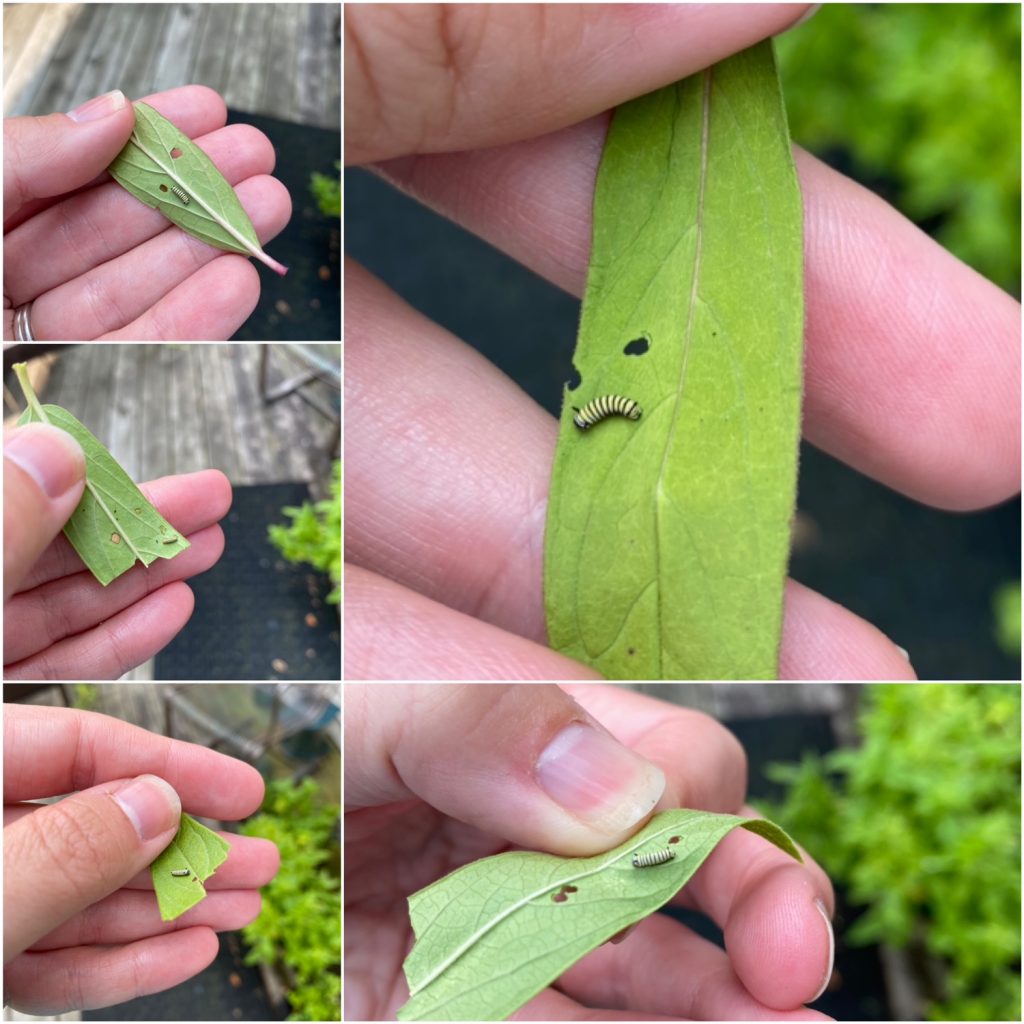
As the caterpillars dine on the milkweed leaves, they grow, and quickly! As they bulk up, they shed their outer layer every few days, by molting. They will do this five times, growing larger and larger. Their antennae become longer, and their white, black, and yellow stripes really come in brightly. They have pretty cute little black feet, too, all the way down their bodies. Once they’ve made it to their fifth instar, (their fifth molt) the caterpillars are ready to form a chrysalis.
The caterpillars can crawl quite a ways to find the spot they’d like to utilize for this next step. Since we keep ours in a mesh butterfly house, they typically crawl up to the top of the enclosure, and then they form a little silk net to hang from. They shed a final time, and then form their chrysalis, which looks lime green with gold rings. While in this stage, which usually takes a few weeks, the caterpillars actually liquify inside of the chrysalis and then transform into butterflies. The shell of the chrysalis is clear, so as the butterflies form, you can actually see them inside. When they are close to emerging, you’ll be able to see the pretty black, white, and orange colors, and you’ll know it’s just about time!
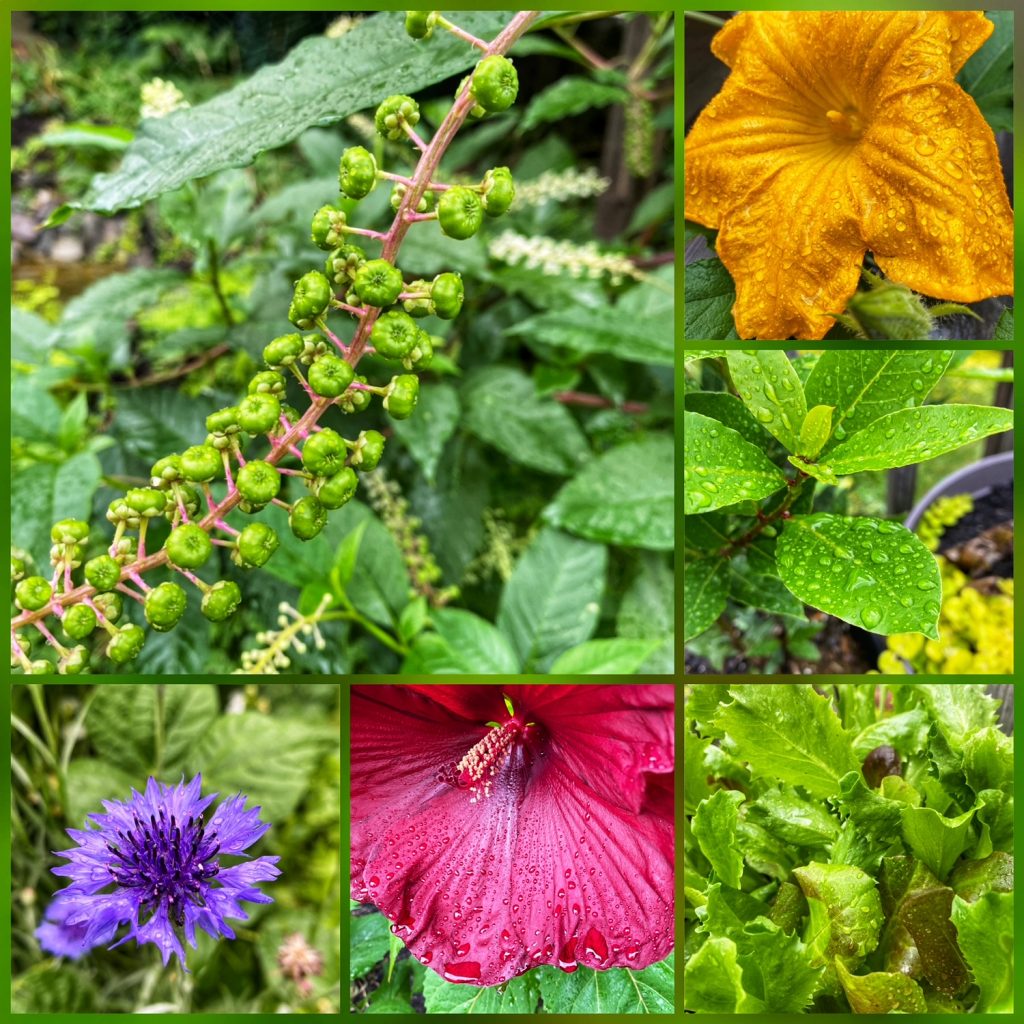
Once the butterflies bust out of their shells, they hang from their feet and pump hemolymph (a substance like blood) into their wings to stretch them out and once their wings dry off, which takes a few hours, they are ready to fly away for a snack and to make more butterflies. It’s a fascinating process to watch and one that I feel lucky to enjoy every summer.
In addition to our pollinating friends, we’ve recently received quite a few visits from a far more wily critter: a racoon. Based on the number of vegetables and fruit this little trash panda has been consuming, I’m shocked that he’s even able to scale our 6′ privacy fence. Every few days, he waddles up onto the porch for a night of wild partying and debauchery. He seems to have developed a taste for our peppers, ginger, and strawberries, and he’s not at all impressed by my arrangement of the deck pots. After each of his visits, I have to right the deck pots, and move them back into position.

I’d taken all of this pretty well, up to this point. I like that my garden doesn’t just belong to me, and I enjoy sharing it will the local wildlife. However, last week, the little bandit took things a step too far! We have a few pumpkins growing in the little patch on the deck, and our little friend decided to partake of the smallest one. On the plus side, at least we know they must be tasty little pumpkins! I hope to get a picture of the raccoon at some point. He must have quite the bowling ball belly going on with all the treats he’s been enjoying this summer.
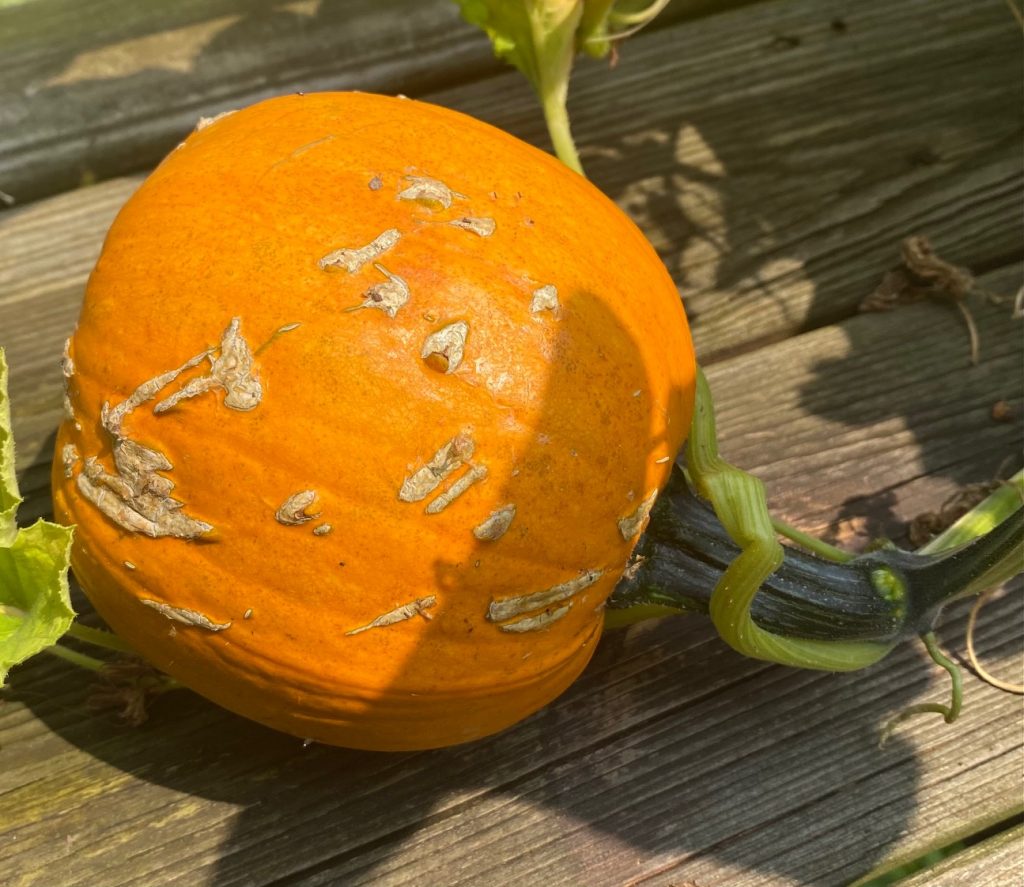
As summertime charges on up in our hemisphere, I hope your garden is looking well, and that you have some time this week to sit back and enjoy it all! Happy Gardening!
